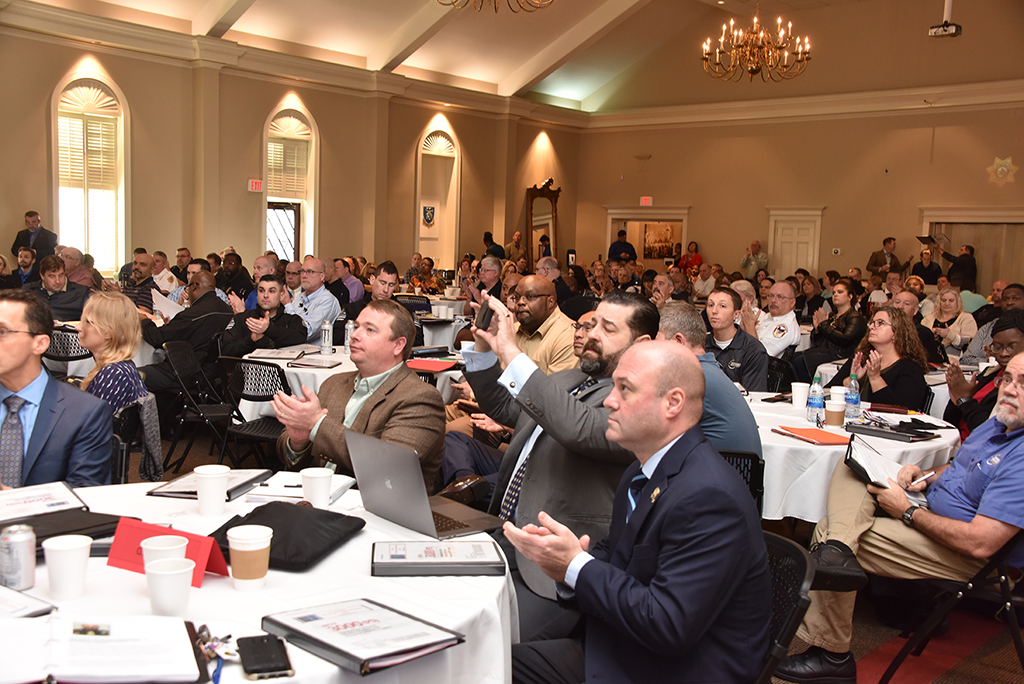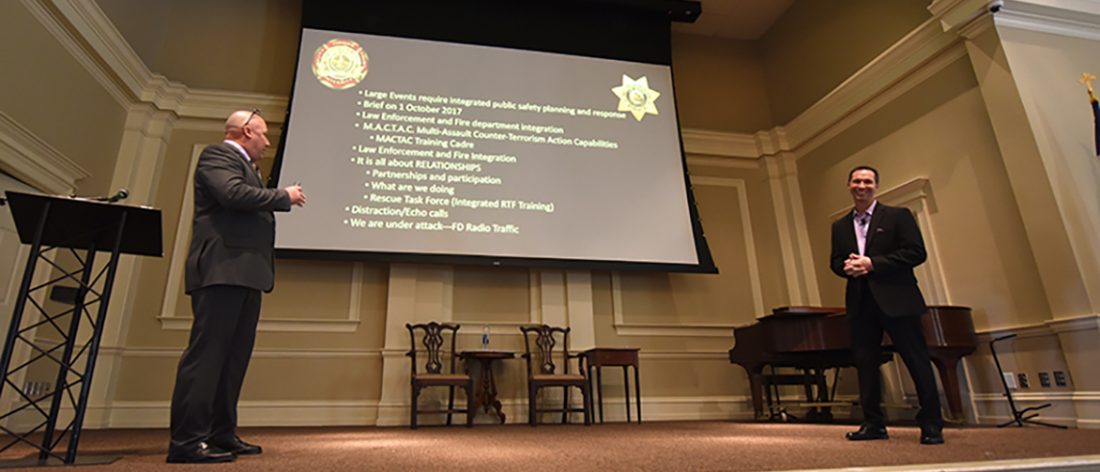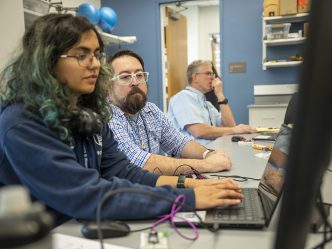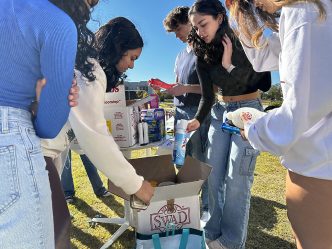More than 250 law enforcement, emergency first responders and community members gathered in St. Andrews Hall at First Presbyterian Church of Augusta on Thursday, Jan. 16, to learn how and why the community should work together during a hostile event.
The inaugural Active Shooter/Hostile Event Response Symposium kicks off a year-long effort to standardize Augusta’s response to an active shooter or hostile event. City law enforcement, Augusta University’s Office of Critical Event Preparedness and Response (CEPaR) and the Augusta branch of the FBI organized the event to begin conversations that will get everyone on the same page and working together if an active shooter or other hostile situation occurs in Augusta.
The National Fire Protection Association 3000, Standard for Active Shooter/Hostile Event Response was written as a guide using input from first responders at such events as the Las Vegas shooting, the Boston Marathon bombing and Sandy Hook shooting.
John Montes, an emergency services specialist and staff liaison for the NFPA 3000, gave an overview of the standard. He said it will unify language across agencies and strengthen communication between them during critical moments.
The agency will follow Augusta’s progress and develop a model for other communities to follow.
“We’ve given you a blueprint. You’re showing other people how to use it,” he said.
Lt. Andy Henricksen of the Las Vegas Police Department and Battalion Chief Craig Cooper of the Las Vegas Fire Department shared their personal experiences responding to the Las Vegas shooting. They showed video that included police officers being wounded and the mass confusion as people tried to make sense of what was happening as shots rained down on the crowds and emergency personnel from the 32nd floor of the Mandalay Bay Resort and Casino.
Their experience demonstrated the need for police and fire departments to develop tactical strategy and emphasize cooperation and cross training between the two departments.

A hostile event situation is complex. Communities can prepare as best as they can by holding trainings, planning command centers and creating tactical strategies to help responders know where to go and what to do during a crisis situation. But it also extends to planning recovery efforts for helping a community heal during the aftermath and beyond.
Keynote speaker Dr. Rich Kamin reminded attendees that recovery and mental health is just as important, as healing will continue for communities and the victims for years to come.
Nothing in his medical training prepared him for the horror of Sandy Hook, he said. He did not provide any medical care that day. When he arrived at Sandy Hook Elementary School on Dec. 14, 2012, there were no wounded victims. Twenty children and six adults were all dead, and it was his job to pronounce them deceased. All he could think about were his own children at home.
Kamin said he still has flashbacks, but one of the things that helped him was when a friend and mental health professional told him what symptoms to expect following exposure to such a traumatic event.
“Good council normalized what I was about to experience,” he said. “I’d been told there’s this really well understood response, there’s something we can do about it. There are trained professionals that can help us get through this. What I think we all ought to do is that as we are developing these processes, while we’re out there really beating the drums, I hope we’ve thought about this. Otherwise, we are being disingenuous, if not outright lying to the people we’re sending out there.”
Dr. Alejandro Baez, vice chair (OpMed) DEM and director of the Medical College of Georgia’s Center of Operational Medicine, discussed the importance of preparedness in the medical centers when victims of hostile events and mass shootings begin flooding in for treatment.
He was one of the authors of the NFPA 3000 Standard and said there are 18 codes in the NFPA standard that deal specifically with the hospital side of things.
“Hopefully after what we achieve today … I keep joking at my table that it’s going to be a ‘be careful what you wish for’ moment,” he said. “It’s going to be a lot of work. We’re all going to come together. We’re going to drill, drill, drill. We’re going to have difficult conversations, but hopefully at the end we’re going to be a better prepared community.”
 Augusta University
Augusta University




